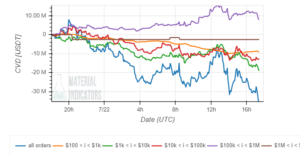
WASHINGTON, D.C. — Today, the Solar Energy Industries Association (SEIA) issued a whitepaper that outlines steps to secure a stronger domestic solar supply chain in the United States and reduce reliance on global imports, particularly from China.
The paper, American Solar and Storage Manufacturing Renaissance: Managing the Transition Away from China, outlines a plan for reducing imports at a pace that aligns with efforts to reshore manufacturing and scale domestic production in key parts of the supply chain.
“American control of the solar supply chain is critical for our national security and economic strength,” said SEIA president and CEO Abigail Ross Hopper. “China is not going to willingly give up its market share, so we must be methodical and strategic about how we capitalize on the policy certainty from the Inflation Reduction Act and build this American clean energy manufacturing engine.”
The paper concludes that the current policy environment is enough to meaningfully manufacture all elements of the solar supply chain in the United States in the medium and long term. This independence does not mean America will cut off from ethical global markets, but rather should capitalize on the opportunity to drastically reduce our reliance on China and other potential adversaries for clean energy equipment and materials.
SEIA’s vision and goal is that by end of this decade, the United States will be the most competitive and collaborative solar and energy storage industry in the world.
SEIA is also releasing an interactive map that tracks new and existing solar and storage manufacturing facilities in the United States. The map includes the new clean energy manufacturing investments that have been announced since the passage of the Inflation Reduction Act (IRA) and its historic investment in domestic manufacturing.
The map incorporates facilities across the solar and storage value chain, including facilities that produce raw materials such as polysilicon, solar module assembly factories and facilities that produce solar components like racking and tracking systems.
According to SEIA analysis, the IRA is projected to grow America’s solar manufacturing workforce from about 34,000 jobs today to more than 115,000 solar manufacturing jobs by the end of the decade. By 2030, nearly 20% of solar jobs will be in manufacturing, up from roughly 12.5% today.
“The tides have turned in the solar manufacturing business landscape thanks to the IRA, and the announcements already made will create up to 80,000 high quality, family-supporting jobs,” said Ms. Hopper. “This is just the tip of the iceberg. With speedy implementation of the 45X manufacturing tax credit, more well-paying solar careers will be on the way.”
Users can filter the map by product type, facility size, location, jobs, investment total and production volume. The map includes 42 GW of U.S. solar module manufacturing announcements to date, marking significant progress toward SEIA’s stated goal of 50 GW of domestic manufacturing capacity by 2030.
Explore the whitepaper, new map, and fact sheet to learn more about the growing economic impact of America’s solar manufacturing industry.
Key Takeaways
- The United States is undergoing a transformational buildout of domestic solar and storage manufacturing.
- Like other industries, the U.S. can and is breaking free from an over-reliance on imports while building a resilient and equitable U.S. solar and storage manufacturing base.
- Manufacturing has the largest jobs multiplier of any segment of our economy. Every factory job creates employment opportunities in other sectors, such as sales and purchasing, marketing, accounting, human resources, warehousing and logistics, and raw material supply.
- We estimate that by 2030 the IRA will grow the solar and storage manufacturing workforce to 115,000 Americans and lead to more than 507,000 jobs across the entire industry.
- In the near-term, U.S. solar module factories must necessarily rely on imported cells while new cell factories are constructed. Similarly, cell factories will need to import wafers while domestic ingot and wafer factories are built.
- In the medium and long term, current policy provides a path to produce most solar and storage products domestically.
- It’s no secret that China dominates many components of solar and storage supply chains.
- It’s not enough to reduce our reliance, for example, on solar cell or module imports, we must also be able to produce solar and storage manufacturing equipment here in the United States or source this equipment from allied countries.
- This does not mean that we completely abandon global markets and supply chains, but rather that we reduce our reliance on China for solar and storage manufacturing equipment and raw materials.
- SEIA’s vision and goal is that by end of this decade, the United States will be the most competitive and collaborative solar and energy storage industry in the world, one fueled by American workers and our allies.
- The fact that the fuel source for solar — the sun, is free, plays in important role in the promise of abundant American energy.
Courtesy of SEIA.
Featured image from SEIA Solar & Storage Supply Chain Dashboard.
I don't like paywalls. You don't like paywalls. Who likes paywalls? Here at CleanTechnica, we implemented a limited paywall for a while, but it always felt wrong — and it was always tough to decide what we should put behind there. In theory, your most exclusive and best content goes behind a paywall. But then fewer people read it! We just don't like paywalls, and so we've decided to ditch ours. Unfortunately, the media business is still a tough, cut-throat business with tiny margins. It's a never-ending Olympic challenge to stay above water or even perhaps — gasp — grow. So ...

- SEO Powered Content & PR Distribution. Get Amplified Today.
- Platoblockchain. Web3 Metaverse Intelligence. Knowledge Amplified. Access Here.
- Source: https://cleantechnica.com/2023/03/08/u-s-solar-storage-paper-outlines-plan-to-take-control-of-u-s-supply-chain/
- :is
- $UP
- 000
- 1
- 28
- a
- Able
- About
- above
- Accounting
- across
- Act
- Aligns
- All
- already
- always
- america
- American
- Americans
- analysis
- and
- announced
- Announcements
- ARE
- AS
- Assembly
- Association
- At
- base
- BE
- behind
- BEST
- body
- Breaking
- build
- Building
- built
- business
- by
- CAN
- Capacity
- capitalize
- careers
- Cells
- certainty
- chain
- chains
- challenge
- China
- clean energy
- collaborative
- competitive
- completely
- components
- content
- control
- countries
- country
- create
- creates
- credit
- critical
- Current
- Cut
- D.C.
- Date
- decade
- decide
- decided
- Domestic
- domestically
- dominates
- drastically
- Economic
- Economic Impact
- economy
- efforts
- elements
- employment
- energy
- Engine
- enough
- Entire
- Environment
- equipment
- estimate
- Ether (ETH)
- ethical
- Even
- Every
- example
- Exclusive
- existing
- facilities
- Facility
- factories
- factory
- field
- filter
- For
- Free
- from
- Fuel
- Give
- Global
- global markets
- goal
- Goes
- going
- Grow
- Growing
- Have
- here
- High
- historic
- How
- HTTPS
- human
- Human Resources
- image
- Impact
- implementation
- implemented
- import
- important
- imports
- in
- In other
- includes
- Including
- incorporates
- independence
- industries
- industry
- inflation
- investment
- Investments
- IRA
- Issued
- IT
- ITS
- Job
- Jobs
- jpg
- Key
- landscape
- largest
- lead
- LEARN
- like
- Limited
- location
- logistics
- Long
- made
- managing
- manufacturing
- manufacturing industry
- many
- map
- margins
- Market
- Marketing
- Markets
- material
- materials
- max-width
- Media
- medium
- methodical
- module
- more
- most
- MS
- National
- national security
- nearly
- nearly 20%
- necessarily
- Need
- New
- of
- Olympic
- on
- ONE
- opportunities
- Opportunity
- Other
- outlines
- Pace
- panel
- Paper
- particularly
- parts
- path
- People
- perhaps
- plan
- plato
- Plato Data Intelligence
- PlatoData
- policy
- potential
- president
- produce
- Product
- Production
- Products
- Progress
- projected
- promise
- provides
- purchasing
- put
- quality
- rather
- Raw
- Read
- reduce
- reducing
- reliance
- Renaissance
- resilient
- Resources
- Role
- roughly
- s
- Said
- sales
- Scale
- Secret
- Sectors
- secure
- security
- segment
- Share
- should
- significant
- Similarly
- since
- Size
- So
- solar
- solar energy
- solar panel
- Source
- Sources
- stated
- States
- stay
- Steps
- Still
- storage
- Strategic
- strength
- stronger
- such
- Sun
- supply
- supply chain
- Supply chains
- Systems
- Take
- tax
- tax credit
- that
- The
- the world
- There.
- tip
- to
- today
- Total
- toward
- Tracking
- transformational
- transition
- Turned
- u.s.
- United
- United States
- us
- value
- Ve
- vision
- volume
- Warehousing
- Water
- Way..
- What
- while
- Whitepaper
- WHO
- will
- willingly
- with
- workers
- Workforce
- world
- Wrong
- Your
- youtube
- zephyrnet







